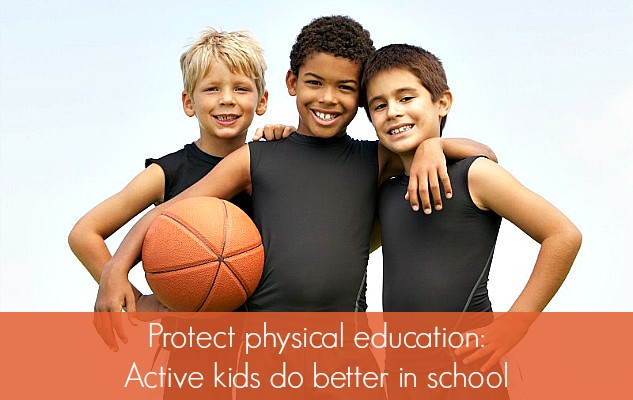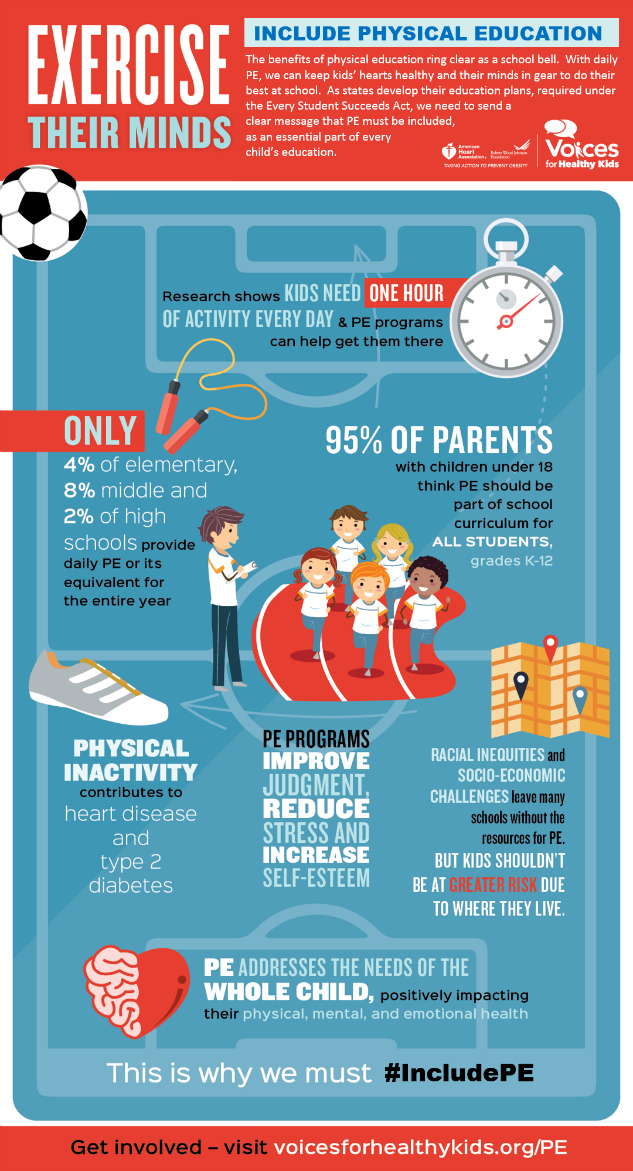
This post reflects a compensated editorial partnership with Voices for Healthy Kids, a joint initiative of the American Heart Association and Robert Wood Johnson Foundation.
As a mom of two boys, I’ve learned about the importance of making sure my kids get exercise and physical activity every day. I’ve also seen how much better my boys behave, concentrate, and learn when they have consistent movement throughout their day.
Whether due to financial constraints or the demands of a rigorous curriculum, many schools across the country have reduced or altogether eliminated physical education. Because students spend six hours or more in school each day, they need more opportunities for physical activity throughout the school day.
Why should you be concerned about protecting physical education (PE) in schools?

Don’t just take my word as a mom. While it’s common knowledge that physical activity is great for the body, research also shows that exercise also increases blood flow to the brain which promotes the growth of new brain cells and learning.
In his article titled Want to Raise Successful Boys? Science Says Do This (but Their Schools Probably Won’t) , Bill Murphy, Jr. states, “Most of us spend hours each day sitting at work. Science says it’s killing us, and we have developed all kinds of fads to combat it – from standing desks to smartphone alerts to get us up and moving…Armed with that knowledge, however, what do we force our kids to do each day at school? Sit still, for six or eight hours.”
International educator, pediatric psychologist, and author Dr. Lynne Kenney says, “Kids like to wiggle while they work.” Research reviewed in her book 70 Play Activities shows, “Large motor movement such as walking 15 minutes before school, doing moderate-intensity exercise before a test and peddling or bouncing before academics have been shown to improve performance. Small movements such as fidgeting, squirming, leg-swinging, foot-tapping, and chair-scuffling may help us learn new knowledge and work out complex tasks.”
Why can’t our children sit still in school? Angela Hanscom, a pediatric occupational therapist and the founder of TimberNook, a nature-based development program, explains the problem of fidgeting: “Children naturally start fidgeting in order to get the movement their body so desperately needs and is not getting enough of to “turn their brain on.” What happens when the children start fidgeting? We ask them to sit still and pay attention; therefore, their brain goes back to sleep.”
Our children are becoming the least physically fit generation in history and will be the first generation not to outlive their parents. Our children need physical education that fosters lifelong active lifestyles in order to:
- Achieve holistic health including physical, intellectual, mental, emotional, social, and spiritual health
- Develop their motor skills, muscle strength, and vestibular system
- Facilitate personal growth including self-discipline for lifelong physical activity and healthy habits, self-confidence, self-esteem, and independence
- Develop leadership skills and experience
- Reduce stress through healthy physical activities rather than sedentary activities like watching TV or playing video games
- Build relationships through healthy social interactions and team building
- Set goals
- Complement other subjects in a school’s curriculum
Every state in our country is putting together a comprehensive plan to ensure all students receive a fair, equitable, and high-quality education. These plans are required by the Every Student Succeeds Act (ESSA), recently passed by Congress. Please join us as we advocate for physical education to be included in every state’s ESSA plans. PE is a critical part of every child’s education, because it addresses the needs of the whole child, positively impacting their physical, intellectual, mental, emotional, social, and spiritual health.





